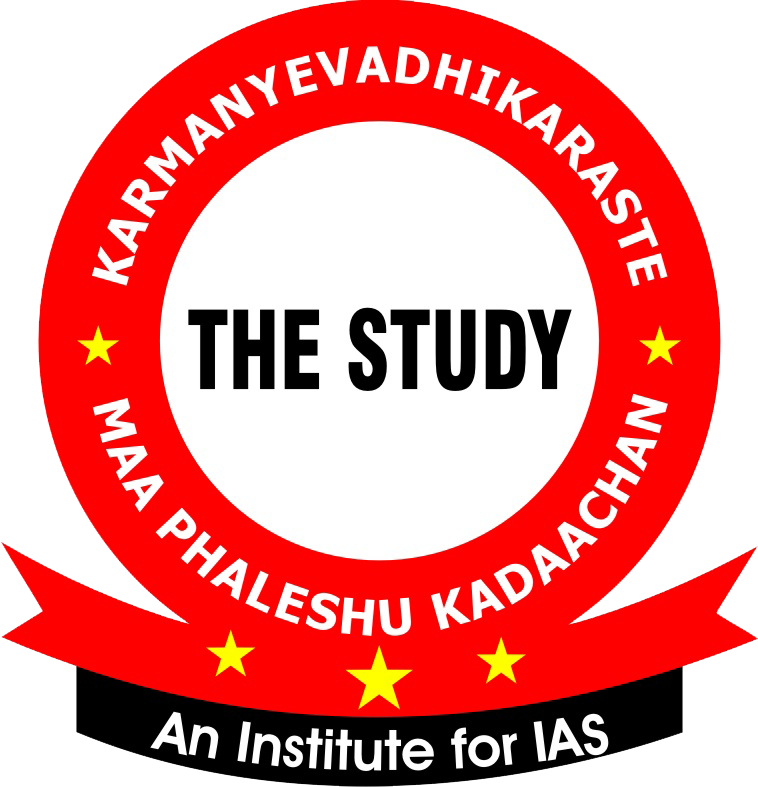June 21, 2023
UNESCO, Y chromosome, PRIDE FLAG, ANAIKATTI ELEPHANT
Re-entry of the United States to UNESCO
Why in News?
- Recently, the United States made an announcement stating its decision to rejoin the United Nations Educational, Scientific and Cultural Organization (UNESCO).
About UNESCO
- UNESCO, established on November 16, 1945, is a specialized agency of the United Nations.
- Objective: Its primary objective is to foster international cooperation in the fields of Education, Science, and Culture. Through this cooperation, UNESCO aims to promote peace and create a global consensus on crucial matters such as justice, the rule of law, human rights, and fundamental freedoms, as outlined in the United Nations Charter.
Reasons for the withdrawal of the United States from UNESCO
- In 2017, the Trump administration withdrew from UNESCO.
- The Obama administration had already ceased funding to UNESCO in 2011.
- The Trump administration also attempted to withdraw from the Paris Agreement and stopped funding the World Health Organization (WHO).
- In 2020, President Trump announced the U.S.'s withdrawal from funding the WHO and initiated the process of withdrawing from the Paris Agreement.
- These decisions were influenced by the "America First" policies of the Trump administration.
- The Trump administration believed that the U.S. was being disadvantaged by major polluters like China and India.
Decision to Re-entry
- The US decided to rejoin UNESCO due to China filling a gap left by the US in policy making, particularly in areas like setting global standards for artificial intelligence and technology education.
- China being explicitly cited as the reason for the US's decision is unprecedented in rejoining a multilateral agreement.
- Recent political changes under President Joseph Biden's administration led to the decision, marking a departure from the Trumpist worldview.
- The US remains a strong ally of Israel and does not recognize Palestine. It's important to note that advancements in AI differ from historical technological developments.
******
Y chromosome: ‘Master of maleness’
Why in News?
- Studies conducted by researchers at the University of Virginia School of Medicine, U.S., and Uppsala University, Sweden, among others, have shown that the loss of the Y chromosome (LoY) in humans is a phenomenon that occurs with age. This loss has been associated with several debilitating medical conditions.
CHROMOSOMES
- In humans, the nucleus of each cell contains 23 pairs of chromosomes, a total of 46 chromosomes.
- The first 22 pairs are referred to as autosomes, which are homologous chromosomes.
- The 23rd pair of chromosomes is known as allosomes or sex chromosomes. In most females, the pair consists of two X chromosomes, while in most males, it consists of one X chromosome and one Y chromosome. As a result, females have 23 pairs of homologous chromosomes, while males have 22.
- The X and Y chromosomes have regions of homology called pseudo autosomal regions. The Y chromosome determines the 'sex-determination' of the male.
- That's why the Y chromosome is often called the "master of maleness".
Research findings
- Many animal species are at risk of losing the Y chromosome in the future. While some species naturally lost their Y chromosome.
- Animals that have lost chromosomes provide us with models to understand the process of sex-chromosome turnover and a means to repurpose another chromosome (i.e. one of the autosomes) into a sex chromosome.
- Based on studies in mice, men lose the Y chromosome (LoY) with age and this is associated with a higher frequency of cancers, Alzheimer’s disease, and a shorter lifespan.
- Due to its limited ability to recombine, the diminutive Y chromosome has been passed from father to son, carrying the legacy of generations.
- In a genetic study, published in 2003 in the American Journal of Human Genetics, researchers reported that around 0.5% of all the men in the world have inherited a Y chromosome from the Mongol emperor Genghis Khan or one of his descendants.
- However, a recent study in fruit flies from France’s National Centre for Scientific Research, published in the journal Nature Ecology and Evolution, attributed the longevity to the phenotypic sex of the animal rather than the presence of a Y chromosome. Phenotypic sex refers to an individual’s sex as deduced from their genitalia.
- The scientists have noticed substantial differences in lifespan between the sexes: the females tend to live longer than the males. This phenomenon has been attributed largely to the absence of a second Y chromosome in males, exposing the deleterious mutations in the X chromosome.
******
PRIDE FLAG
Why in News?
- In 2021, Intersex Equality Rights (UK) decided to adapt the Pride Progress flag design to incorporate the intersex flag, creating the Intersex-Inclusive Pride flag.
What is pride flag?
- A Pride flag essentially represents the pride associated with LGBTQ+ social movements. The terms LGBT flag and queer flag are often used interchangeably.
- Pride flags represent various sexual orientations, romantic orientations, gender identities, subcultures, and regional motives, as well as a complement to the LGBT community.
- The original Pride flag was designed by Gilbert Baker in 1978. It had eight stripes, each with a specific meaning: pink represents sexuality, red for healing, yellow for the sun, green for peace with nature, turquoise for art, indigo for harmony, and purple for spirit.
- Pride flags are not only used to represent the LGBTQ+ community. There are 15 types of pride flags commonly seen in the world, some are as follows –
Gilbert Baker Pride Flag
- In 1977, Gilbert Baker, an artist, activist, and openly gay military veteran, designed a rainbow flag as a symbol for the queer community. The flag featured eight different colours and was inspired by the vision of Harvey Milk, a prominent figure in the LGBTQ rights movement.
Philadelphia Pride Flag
- The Philadelphia Pride flag was introduced in 2017 as a means of advocating for greater inclusivity within the LGBTQ+ community. This flag was launched as part of the "More Colour More Pride" campaign in Philadelphia. It incorporated additional black and brown stripes into the traditional Pride flag to represent people of colour, acknowledging their historical marginalization within the broader gay rights movement.
Transgender flag
- The transgender flag was first created by Monica Helms, a transgender woman, in 1999. The two main stripes are light blue and light pink, which represent the traditional colours associated with baby boys and girls respectively. The white stands for those who are intersex, transitioning or who do not identify with any gender.
- Transgender people have a gender identity or gender expression that is different from the gender they were assigned at birth.
New Pride Flag
- To address the changing needs and diversity of the LGBTQ+ community and society, the Progress Pride Flag combines various flags into a single design.
- It has been redesigned to emphasize "Inclusion and Progress".
- The modern Pride Flag uses different colored stripes to represent people's experiences and identities, including those who identify as transgender, gender non-conforming (GNC), or undefined.
- Daniel Quasar's flag includes the colors of the Transgender Flag, as well as the black and brown stripes from the 2017 Philadelphia Pride Flag, which sought to represent the queer and Trans identities of black and brown people. Those two stripes also represent people living with HIV/AIDS.
- The most recent version of the flag was designed by Valentino Vecchietti in 2021 as an intersex-inclusive Pride flag. A purple circle over a yellow triangle was included in the chevron part of the pride flag. This is a reference to the Intersex pride flag. This is actually a new version of the previous Progress Pride flag created by Daniel Quasar in 2018.
India's Stand
- While most organisations in India still use the older rainbow pride flag in their events, the new variation of it is being increasingly accepted as a more inclusive representation for the community.
- The month of June, recognized worldwide as Pride Month, is marked by several events across India to celebrate the LGBTQIA+ community.
- The Pride flag was used by activists, community members, and allies as a symbol of resistance and acceptance. It was designed by the famous American artist and activist Gilbert Baker.
Why is it called the Intersex-Inclusive Progress Pride Flag?
- According to the United Nations, intersex people are born with sex characteristics (including genitals, gonads and chromosome patterns) that do not fit typical binary notions of male or female bodies.
- In 2021, Intersex Equality Rights (UK) decided to adapt the Pride Progress flag design to incorporate the intersex flag, creating the Intersex-Inclusive Pride flag. Intersex Equality rights activist did the redesigning. The colours yellow and purple are used in the intersex flag as a counterpoint to blue and pink which are traditionally seen as gendered colours.
******
ANAIKATTI ELEPHANT HABITAT
Why in News?
- According to the report titled Right of Passage: Elephant Corridor of India, Anaikatti has not been notified as an elephant corridor by the State government, obstructing conservation efforts.
About Elephant Corridor:
- Elephant corridors are narrow strips of land that connect two large habitats of elephants. The establishment of elephant corridors not only helps confine elephants within their natural habitats but also decreases the frequency of their encounters with human-inhabited areas.
- “Elephants are long-ranging animals and usually follow a set path that they have been following for ages. These paths are known as corridors.
- This year, six people and 12 elephants have died due to Man-Elephant Conflict.
Reasons for Man-Elephant Conflict in Anaikatti
- This region of the Western Ghats has been a part of the Elephant Highway. The unchecked growth of resorts and farmhouses in the area, without necessary clearances makes the Tamil Nadu-Kerala border vulnerable to elephants. Since new buildings on such land most of them are electric-fenced.
- The road connecting Tamil Nadu’s Coimbatore and Kerala’s Palakkad districts passes through the critical Anaikatti North-Anaikatti South elephant corridor, one of two such passages in Coimbatore district identified by the Wildlife Trust of India as a “high ecological priority” in the second edition of its report.
- The corridor falls under the Coimbatore and Periyanaickenpalayam forest ranges of the Coimbatore Forest Division. “To avoid steep portions of the forest, elephants often choose to traverse the fringes of the plains, especially when there are calves in the herd.”
- The large pits dug by brick kiln manufacturers have made the terrain even more difficult for elephants. Though 177 brick kiln units have been shut down following a Madras High Court order in 2021, the pits still remain.
- In fact, of the 16 corridors identified by the WTI in Tamil Nadu, only one has been notified by the State.
- The WTI study, published in 2017, had mentioned existing threats to the corridor in the form of vehicular traffic and several institutions in the area, including the government’s own Salim Ali Centre for Ornithology and Natural History.
- The Kuthiran tunnel causes an unexpected human-wild elephant conflict.
Measure
- Wildlife officials and veterinarians should develop a strategy to address the conflict between elephants and humans. This strategy should include a plan to relocate stray elephants and other troublesome elephants.

